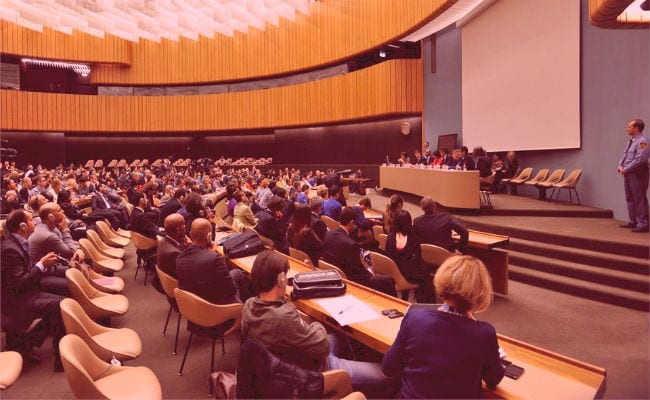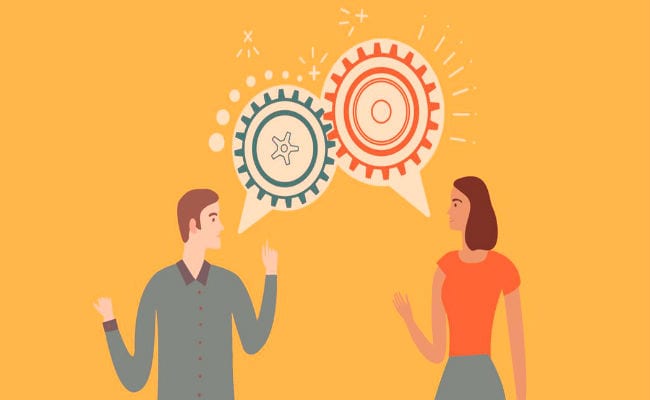The human being is distinguished from his peers in his way of thinking and feeling. The fascinating thing about this fact is that despite the fact that in theory we all have the same structural configuration, we react differently to stimuli, developing different perception and thinking.
It has been the object of philosophical consideration, the dissertation on how to distinguish between the diversity of points of view, regarding a subject, which of them is the “correct” one. This is why they have developed multiple techniques for debating regarding a specific topic, and discern among all the possibilities which one is the most appropriate. In this article we will deal specifically with the panel discussion.
Importance of debating techniques
Previously, when a difference was presented regarding an issue, a dispute was fostered between the parties involved, which ranged from heated discussions to large fights, in which the point of view of the strongest predominated.
This was perhaps a wild way of proceeding, but if we look at the development of the history of the world, we can realize that many of the great wars that transformed each era have their origin in a difference of opinion regarding an issue, in which the parties could not reach agreements through dialogue.
Hence the importance of implementation of discussion techniques. They put in our hands the tools to expose, through a suitable communication mechanism, the different opinions that can be handled regarding a topic of general interest.
For the implemented technique to be carried out successfully, it is necessary the following conditions are met:
- Each participant must be informed and documented Regarding the topic to be discussed, this will allow you to make valuable contributions to the solution of the topic.
- If you have a well-defined point of view on the subject of discussion, the participant is in the duty to expose clearly your reasons for defending that position.
- Adopt a posture of respect, different opinions deserve to be heard and evaluated. At the end of the day, the idea is to develop a global solution, in which everyone is a participant.
- Respect the established time frame for each intervention. In this type of dynamics, concise participations are usually encouraged (digression should be avoided).
- Not closing to a point of view, the importance of debating is to broaden the field of understanding regarding a topic.
- Use appropriate language and tone of voice.
Discussion panel
This technique is commonly used when a group of specialists on a subject want to extend their knowledge to a general public. For this reason they are arranged in a kind of panel, facing a group of people who want to broaden their understanding.
Panel application: This modality is common in the realization of conferences, where the specialists will prepare their presentations, and then they open the public to express doubts and opinions about the exposed. In many cases a debate is encouraged. Examples of panels: medical conferences, meetings of public bodies, etc.
General characteristics
- It is a technique of bilateral debate, since there is an exchange of information, in which both parties (the one who exposes and the one who listens) interact.
- The presence of a neutral figure is required to mediate between both parties.
- The message is guaranteed to be conveyed clearly.
- Specialists in a field are called in to play the role of panelist.
Elements that make up a discussion panel
There are multiple debate techniques, and the differences that are distinguished between each of them are associated with the objective they pursue. In the case of the panel discussion, that objective is giving the opportunity to an audience, who wishes to specialize in a subject, to interact and exchange opinions with those who consider themselves experts in the field. Therefore, the structure of the panel is established as follows:
Panel of specialists
Made up of those people considered experts on a subject. It is considered that the number of "panelists" should not exceed 10, in fact the number that is considered ideal for the structuring to be functional is reduced to 5.
What is expected of a panelist?
An information-rich, coherent and practical speech. The person must prepare their presentation, in such a way as to avoid falling into redundancies, which cause the loss of public interest.
Members of a panel discussion, they should divide the topic among the members, being very careful not to touch the subject of another panelist, since this can generate redundancy and boredom. In addition to this, during the round of interaction with the public, you should pay attention to the doubts, and respond to them with kindness.
- Public: It is advisable that people who are going to participate from the point of view of a spectator find out about the subject, since they will better assimilate the ideas expressed by the panelists, if they have prior knowledge, and they will know how to take advantage of the round of interaction by asking questions interesting
- Moderator: In the panel discussion, a person with a neutral position is required to present the issues to the public (making a prelude to each panelist). This person too will be in charge of keeping timeor of the interventions of both the panelists, and in the round of questions. It should moderate the tone of the participants, fostering a cordial and respectful atmosphere in the development of this technique. His presence must command respect, he must express himself properly and use clear language, since he will be in charge of mediating between the panelists and the public, as well as presenting a summary on the important topics that were discussed.
Running the discussion board
- First the moderator makes the opening by making a brief introduction to the topic to be discussed, followed by a presentation of each of the panelists, indicating the specialty of each one, and the work and research carried out in the area (if they have been done).
- Subsequently, the members of the panel of specialistsThey will make their presentation in a previously agreed time interval. During this stage, members of the public they pay attention silently, noting the questions they want clarified when the round of interaction comes around.
- Once the presentations are finished, the moderator Asks general questions to the panelists, on important issues that should be discussed in their consideration, or on those issues that could lead to confusion. This is done for the purpose of reaffirming the information.
- Once all the issues are clear, the round of conclusionsIn which the moderator invites the panelists to make a summary of the point they made, and finally, he will be in charge of reading their conclusions about it.
- Finally, the round of questions begins, being the moderator the one in charge of establishing participation rules, as well as granting turns, and measuring the time of each one. At all times, you must be aware that the formulation of questions is in a respectful tone, and in the event of a breach of the rules, censor participation.


thanks i got a 10 xd